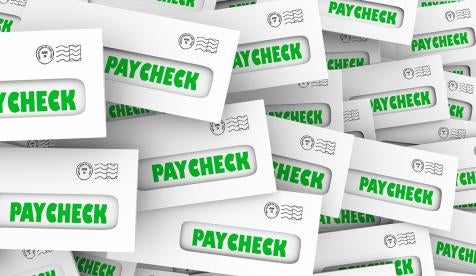On March 27, 2020, President Trump signed into law the Coronavirus Aid, Relief, and Economic Security Act (“CARES Act”). Among the provisions of the CARES Act is the Paycheck Protection Loan Program (“PPP”), a new $349 billion forgivable business loan program under the Small Business Administration’s (“SBA”) existing Section 7(a) loan framework.
Under this program:
-
The SBA has the authority to make loans.
-
All existing 7(a) lenders, more than 800 banks, are currently authorized to issue these loans, and new lenders can be authorized to join the program.
-
The SBA is providing a free online matching tool to pair borrowers with a lender at https://www.sba.gov/funding-programs/loans/lender-match.
-
The government is guaranteeing 100% of the loans made.
-
The loans are unsecured and do not require a personal guaranty.
Who can be a borrower under the program?
-
Eligible businesses must be either: (a) a “small business concern” under current SBA guidelines; or (b) any business with not more than 500 employees, or the applicable size standard in number of employees for the industry as provided by the SBA, if greater.
-
Unless the business is in the accommodation and food service sector (those businesses with NAICS codes beginning with 72), in which case the standard affiliation rules have been waived, the affiliation rules for SBA loans still apply, meaning businesses must determine how many employees they have and how many employees their affiliates have. This could impact private equity or other institutionally backed businesses where a fund has control of multiple businesses because the affiliate rules require the business to aggregate its employee count with all affiliates. There is the potential for relief from this requirement under later sections of the CARES Act related to businesses with 500-10,000 employees, but these relief provisions are subject to regulations by the Treasury Department that have yet to be written.
-
Sole proprietors, independent contractors, and other self-employed individuals are also eligible to participate in the PPP.
-
A business with an NAICS code beginning with 72 (that is, the accommodation and food services sector) can apply even if the business has more than one physical location, as long as the business does not have more than 500 employees per location. As noted above, the SBA’s affiliation rules have been waived for these NAICS code 72 businesses.
-
For eligibility and underwriting purposes, a business must (a) be operational on February 15, 2020; and (b) have employees for whom it paid salaries and payroll taxes (or be a paid independent contractor).
-
The PPP provides for a streamlined application process. The borrower is required to certify that: (a) the “uncertainty of current economic conditions” makes the loan necessary to support its “ongoing operations;” (b) the funds will be used for the permitted purposes described below; (c) the borrower does not have an application pending for another 7(a) loan for the same purpose that is duplicative of amounts applied for or received under this loan; and (d) between February 15, 2020 and December 31, 2020, the borrower is not receiving funding from another 7(a) loan for the same purpose.
What are the terms of the program?
-
The maximum loan amount is $10 million, with each borrower’s actual loan size based on a formula regarding their payroll costs. For most, the loan amount will be the lesser of: (a) $10 million; and (b) 2.5 times the average total monthly payroll costs incurred in the one-year period before the loan is made.
-
Borrower and lender fees are waived for PPP loans.
-
Most other typical underwriting tests are waived. However, lenders will likely require Know Your Customer or other diligence to be conducted on the borrower.
-
The maximum interest rate is 4%.
-
Prepayment penalties are prohibited.
-
All lenders must defer payments for at least six months, but not for more than a year.
-
Loans can be sold on the secondary market and the SBA cannot collect fees.
-
The SBA will provide the lenders with a processing fee between 1-5%, depending on the size of the loan.
How can funds be used?
-
Loan proceeds can be used for payroll support (e.g., salaries, paid sick and medical leave, and insurance premiums), mortgage interest, rent, utility payments and other debts incurred by the business. Payroll costs may not include: (a) compensation above $100,000 in any individual employee’s wages; (b) compensation for any non-U.S. employees; or (c) sick or family leave for which tax credits are allowed under the Families First Coronavirus Response Act.
In what situations are loans forgiven?
-
Each borrower is eligible for loan forgiveness equal to the amount spent during an eight-week period after the origination date of the loan on: (a) payroll costs, (b) interest payments (but not principal or prepayments) on any mortgage in force prior to February 15, 2020, (c) payments of rent on any lease in force prior to February 15, 2020; and (d) payments on any utility for which service began before February 15, 2020.
-
Amounts forgiven cannot exceed the outstanding principal balance of the loan.
-
Any amount not forgiven becomes an ongoing loan obligation (with a maximum term of 10 years and maximum interest of 4%).
-
Any amount previously forgiven shall be reduced proportionally by any future reduction in borrower’s employees or any reduction in salaries during the period between March 1, 2020 and December 31, 2020. It is important to note that the amount forgiven will decrease if employees are terminated or their salaries are reduced in the future.
-
To encourage employers to rehire employees, borrowers are not penalized for having a reduced payroll at the beginning of the period so long as the borrower eliminates the reduction in the number of employees or salary levels by June 30, 2020.
-
Borrowers must apply for forgiveness and verify their payments during each applicable period. Documentation can include payroll tax filings and proof of lease payment. Lenders will not be subject to enforcement action or penalties if they receive the documentation.
-
The SBA will purchase the forgiven loan (or pool of loans) from a lender. Cancelled indebtedness is not included in the borrower’s income for tax purposes.






 />i
/>i

